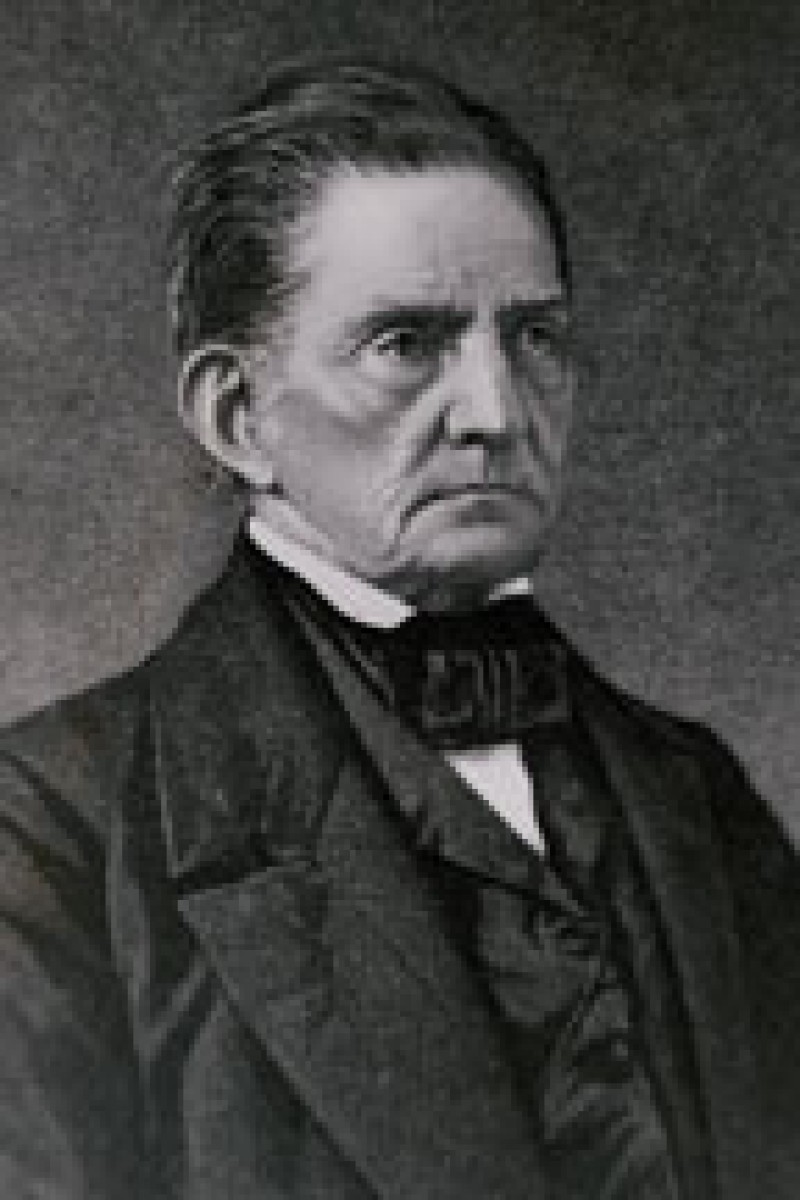Jacob Burnet
Historians cited comments by Jacob Burnet’s contemporaries as to his “great acuteness and intellect in his judgments” during his time on the Supreme Court of Ohio.
Burnet was born in Newark, N.J. on Feb. 22, 1770 to Dr. William and Mary Camp Burnet. He graduated from Nassau Hall (Princeton University) in September 1791, studied law with Judge Elisha Boudinot in Newark and was admitted to the New Jersey bar in the spring of 1796. By September, Burnet resettled in Cincinnati in hope of improving his health and opened a law practice. Among his first clients were large and small landowners who challenged the dubious land sales of John Cleves Symmes’ Miami Land Company. Burnet also traveled the Northwest Territory’s court circuit representing clients in Cincinnati, Marietta and Chillicothe, Ohio Territory; Vincennes, Ind. Territory; and Detroit, Wayne Territory (Michigan) courts.
In 1798, President John Adams appointed Burnet to Ohio’s territorial council after Burnet failed to win a seat in the popularly elected Ohio Territorial Assembly. When the council and the territorial assembly began their sessions in February 1799, Burnet actively contributed to their efforts by preparing legislation designed to organize a system of laws for the Ohio territory and drafting and reporting 16 other pieces of legislation. Burnet represented Hamilton County at each of the two sessions of the First and Second Territorial Assemblies that met from Feb. 9, 1799 to November 1802. A staunch advocate of the Federalist Party while serving on the territorial council, Burnet supported Gov. Arthur St. Clair’s attempts to postpone Ohio statehood, by arguing that the call for statehood was premature and designed to serve the narrow political interests of the “Chillicothe Junto.” In 1802, Burnet’s loyal support for the Federalist position contributed to his defeat, when he campaigned for a seat as a delegate to Ohio’s first constitutional convention.
Following Ohio statehood, Burnet remained out of public office and confined his work to his private law practice until his election as a Democrat-Republican to the Ohio House of Representatives in 1814. In 1815, he was nominated for the U.S. Senate.
In 1816, Burnet retired from the legislature and his law practice to become active in developing Cincinnati’s economy. He participated in the establishment of commercial and industrial enterprises, such as the Miami Exporting Company, which was one of Cincinnati’s first banks, promoted road building and took part in the founding and management of such educational institutions as Cincinnati College and the Medical College of Ohio. In 1817, President James Monroe appointed Burnet president of the Cincinnati Branch of the new Bank of the United States.
Gov. Ethan Allen Brown appointed Burnet to a vacant seat on the Supreme Court of Ohio, which was caused by the death of Jessup Nash Couch on June 30, 1821. Burnet’s appointment ended when the Ohio General Assembly convened in December 1821. On Dec. 8, the Ohio House of Representatives and Senate were notified by Gov. Brown that a vacancy caused by the death of Justice Couch existed and the legislature needed to fill the vacancy before it adjourned. On Dec. 24, 1821, the Ohio House and Senate met in joint session and elected Burnet to a seven-year term ending in December 1828.
Burnet’s published opinions covering the Supreme Court’s sessions in Columbus from 1824 to 1828 are in volumes 1 through 3 of Ohio Reports. Before 1824, the Court’s opinions were not formally published. Texts of their opinions were printed in such Ohio newspapers as the Chillicothe Gazette, Cincinnati Liberty Hall and Steubenville Western Herald. Later historians cited comments by Burnet’s contemporaries that noted his “dissenting opinions manifested more of his own opinions than of law. No man ever questioned his integrity, but no man ever knew him to swerve from his own side.”
Burnet resigned his Court seat on Dec. 11, 1828, shortly before his term ended to accept election to the U.S. Senate to fill the vacancy caused by the resignation of William Henry Harrison. Burnet served in the U. S. Senate until March 4, 1831 and declined to seek re-election. That same year, the Kentucky legislature chose Burnet as one of the commissioners to settle land disputes between Kentucky and Virginia over the Kentucky portion of the Virginia Military District bounty lands.
After leaving the U. S. Senate, Burnet returned to Cincinnati to devote his time to further improving Cincinnati’s economy by participating in the founding the Ohio Life Insurance and Trust Company in Cincinnati in 1834. In 1844, Burnet assisted in the establishment of the Cincinnati Historical Society and, in 1847, published his “Notes on the Northwest Territory,” a semi-autobiographical work that remains an important historical source on the settlement of Ohio and its transition from territory to statehood.
Burnet married Rebecca Wallace in Marietta on New Year’s Day in 1800. Eleven children were born to the couple, with five surviving his death. After a brief illness, Burnet died at his home on May 10, 1853, and was buried in Cincinnati’s Spring Grove Cemetery. In 1865, Burnet’s body was re-interred in the Burnet Mausoleum also in Spring Grove Cemetery. Rebecca Wallace Burnet died in 1867 in Cincinnati and was buried in the Burnet Mausoleum.

14th Justice of the Supreme Court of Ohio
